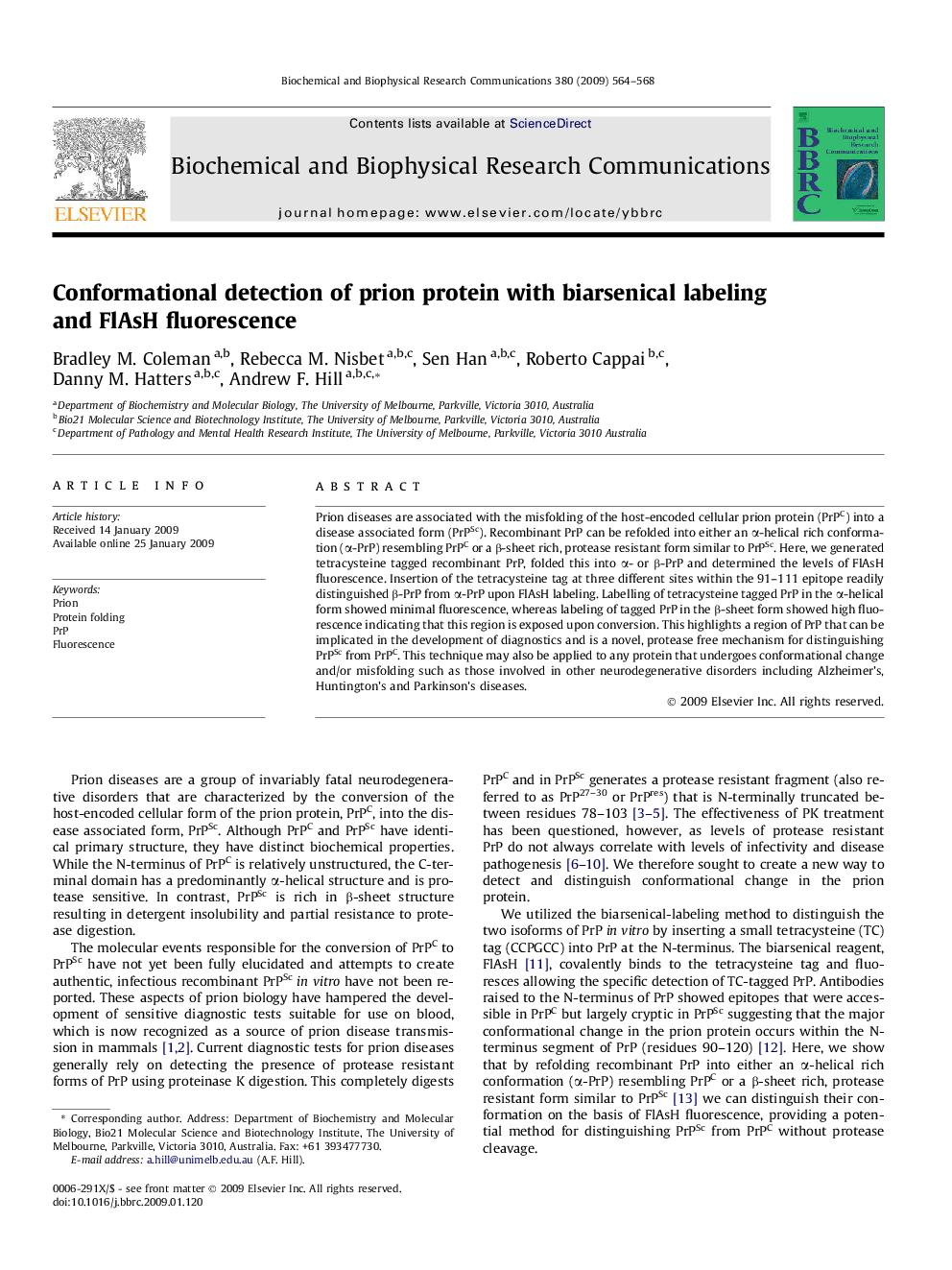| Article ID | Journal | Published Year | Pages | File Type |
|---|---|---|---|---|
| 1933902 | Biochemical and Biophysical Research Communications | 2009 | 5 Pages |
Prion diseases are associated with the misfolding of the host-encoded cellular prion protein (PrPC) into a disease associated form (PrPSc). Recombinant PrP can be refolded into either an α-helical rich conformation (α-PrP) resembling PrPC or a β-sheet rich, protease resistant form similar to PrPSc. Here, we generated tetracysteine tagged recombinant PrP, folded this into α- or β-PrP and determined the levels of FlAsH fluorescence. Insertion of the tetracysteine tag at three different sites within the 91–111 epitope readily distinguished β-PrP from α-PrP upon FlAsH labeling. Labelling of tetracysteine tagged PrP in the α-helical form showed minimal fluorescence, whereas labeling of tagged PrP in the β-sheet form showed high fluorescence indicating that this region is exposed upon conversion. This highlights a region of PrP that can be implicated in the development of diagnostics and is a novel, protease free mechanism for distinguishing PrPSc from PrPC. This technique may also be applied to any protein that undergoes conformational change and/or misfolding such as those involved in other neurodegenerative disorders including Alzheimer’s, Huntington’s and Parkinson’s diseases.
